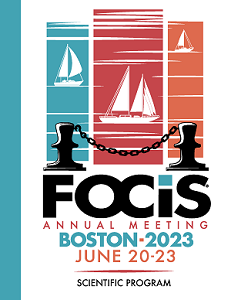Basic Science of Immunology - Adaptive Immunity
Session: Late-Breaking Abstracts
Mapping Human Thymic Regulatory T Cell Development Using Spatial Multiomics
Wednesday, June 21, 2023
4:00 PM - 4:15 PM
Location: Salon H-K
- KS
Kevin Salim
BC Children's Hospital Research Institute, University of British Columbia
Vancouver, British Columbia, Canada
Presenting Author(s)
Abstract Text: Regulatory T cells (Tregs) develop in the thymus and are crucial for immune tolerance and homeostasis. The thymic Treg developmental trajectory has been extensively studied in mice, but knowledge in humans is limited. To better understand human thymic Treg development we used Co-Detection by Indexing (CODEX), Cellular Indexing of Trancriptomes and Epitopes by Sequencing (CITE-seq), and Assay for Transposase-Accessible Chromatin using Sequencing (ATAC-seq) to generate a spatial, multiomic dataset from age- and sex-matched postnatal thymuses (N=7). Flow cytometry for transcription factors and cell surface proteins were used to validate key observations. We identified several subpopulations of candidate Treg progenitors, including CD25hiFOXP3-, CD25-FOXP3lo/+, and CD4+CD8+FOXP3+ cells and mature thymic Tregs (tTregs), defined as CD4+CD25hiFOXP3hiCCR7+ cells. We also found a distinct population of mature, activated Tregs, termed resident/recirculating Tregs (rrTregs). These rrTregs, which were 5-14% of CD4+CD25+ cells, were distinct from tTregs as they lacked thymic emigration markers (CCR7, KLF2, S1PR1), and expressed proteins associated with tissue-resident (CCR8, CD39, ICOS, HLA-DR) and effector (BATF, PRDM1, MAF) Tregs. Cell-cell interaction analyses predicted interactions between IL1R2-expressing rrTregs and IL1B-expressing dendritic cells (DCs), suggesting that rrTregs may act as an inflammatory cytokine “sink”, like their mouse counterpart. CODEX analysis showed that rrTregs are interspersed with tTregs and DCs primarily in the medulla. A future direction will be to sort thymic Treg subsets and conduct functional experiments. Understanding how thymic Tregs develop in humans will lead to novel insights into potential causes of autoimmunity and a better understanding of Treg biology for cell therapy applications.

